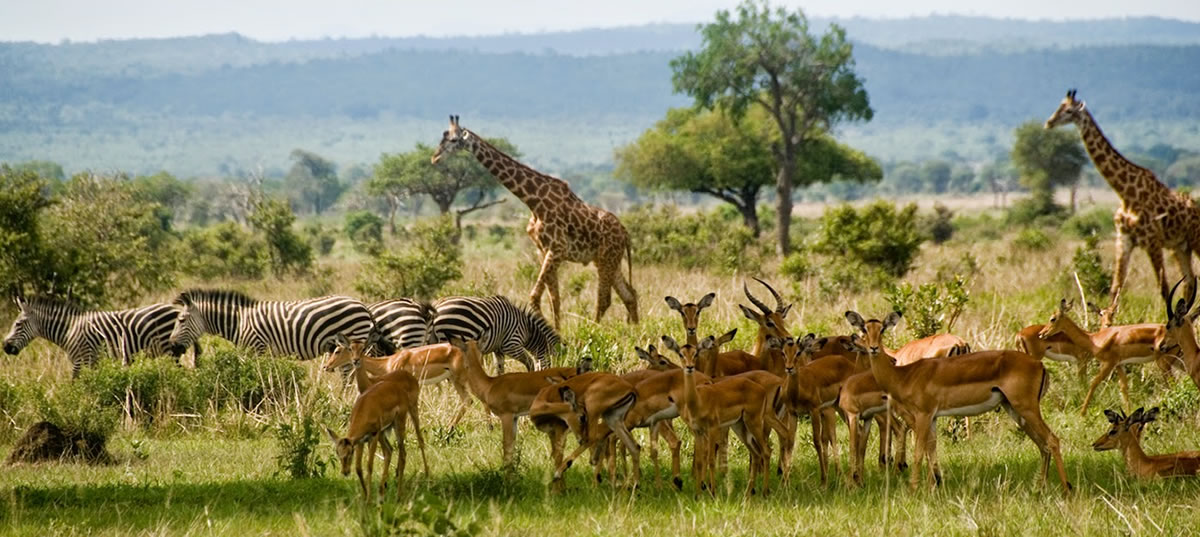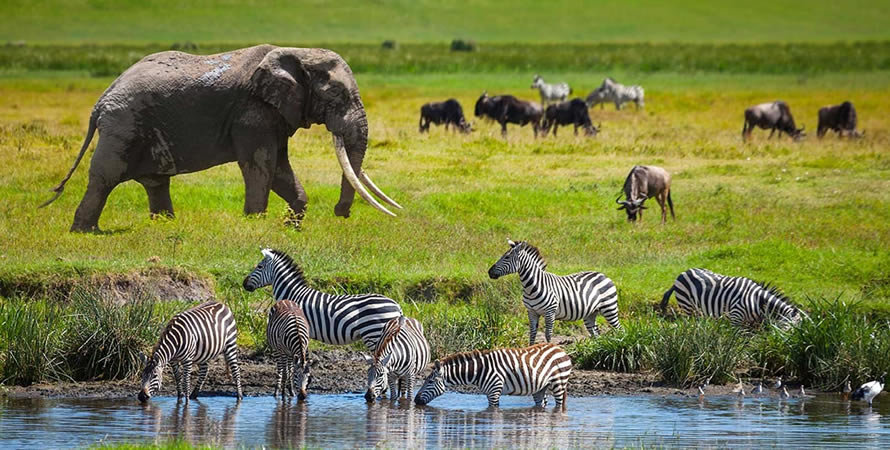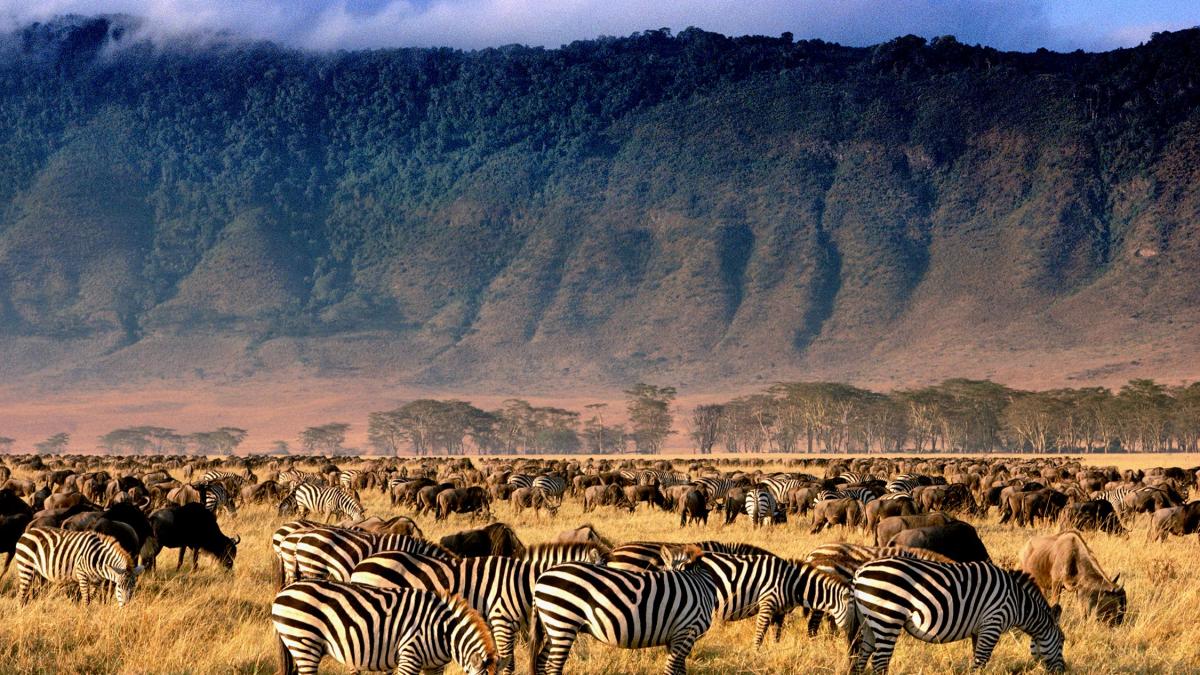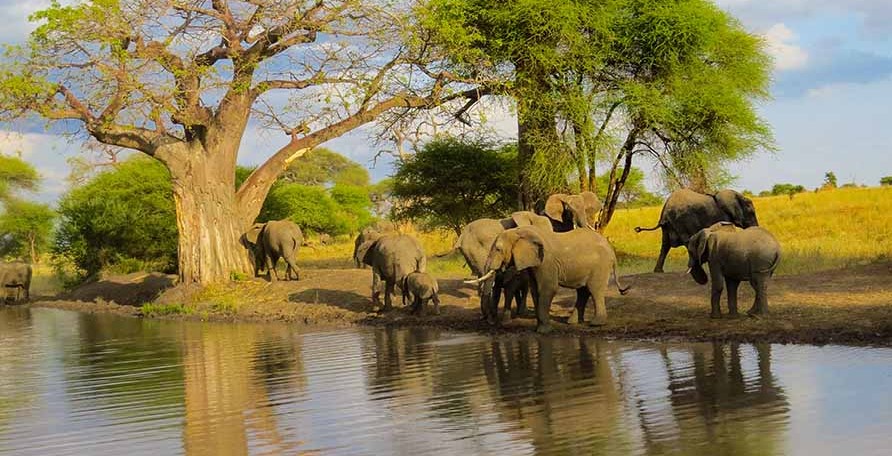
Tanzania Wildlife Safaris: Best Parks and Reserves
Tanzania Wildlife Safaris: Best Parks and Reserves. Tanzania, a country renowned for its unparalleled wildlife, offers a safari experience unlike any other. From the sprawling savannahs of the Serengeti to the lush wetlands of the Selous. It is home to some of Africa’s most celebrated national parks and game reserves. Whether you’re an adventurer seeking to witness the famed Great Migration or a nature enthusiast hoping to glimpse the elusive African wild dog, Tanzania’s diverse landscapes provide the perfect backdrop. In this blog, we’ll take an in-depth look at the best parks and reserves for a wildlife safari in Tanzania. Thus providing detailed information on what makes each destination unique.

-
Serengeti National Park: The Crown Jewel of Wildlife Safaris
Serengeti National Park, one of Africa’s most iconic safari destinations, boasts vast, golden plains teeming with wildlife. Spanning over 14,750 square kilometers. It is not only the oldest park in Tanzania but also the most popular for tourists due to the world-famous Great Migration. Every year, millions of wildebeest, zebras, and gazelles traverse the plains in search of greener pastures, pursued by predators like lions, cheetahs, and hyenas. The sheer volume of animals during the migration offers breathtaking opportunities for photography and wildlife observation.
Moreover, the Serengeti is more than just the migration. Throughout the year, visitors can encounter the “Big Five” (lion, elephant, buffalo, leopard, and rhinoceros). Along with giraffes, antelopes, and an astounding variety of birds. The Seronera River region in central Serengeti is a predator-rich area where visitors often spot lions lounging in acacia trees or leopards stealthily moving through the grass. As the Serengeti has a range of accommodation options, from luxury lodges to budget-friendly campsites. There’s something to suit every traveler’s taste.
-
Ngorongoro Crater: A Natural Wonder and Wildlife Haven
Situated next to the Serengeti, the Ngorongoro Crater is often described as one of Africa’s most stunning natural wonders. It was once a massive volcano that erupted and collapsed on itself. Thus creating a unique, bowl-shaped caldera that today spans over 260 square kilometers. What sets the Ngorongoro Crater apart from other safari destinations is not just its dramatic landscape. But also its impressive concentration of wildlife within a relatively small area. The crater floor is like a miniature Eden, with open grasslands, swamps, and a central lake that attract thousands of animals.
Within this confined ecosystem, visitors can easily spot black rhinos, which are critically endangered. As well as large prides of lions, elephants, and countless other herbivores such as zebras, wildebeest, and buffalo. The Ngorongoro Crater also offers exceptional birdwatching opportunities. With flamingos wading in the shallow waters of Lake Magadi and a variety of raptors soaring above. Given its proximity to the Serengeti, many travelers combine a trip to both locations. Therefore ensuring an immersive wildlife experience.

-
Selous Game Reserve: A Vast and Untamed Wilderness
Heading south, the Selous Game Reserve (now part of Nyerere National Park) offers a vastly different experience from the northern circuit parks like the Serengeti and Ngorongoro. Covering a staggering 50,000 square kilometers, Selous is one of the largest game reserves in the world. Despite its size, it remains relatively untouched by mass tourism, allowing for more intimate and exclusive wildlife encounters.
The diverse ecosystems of the Selous, which include riverine forests, woodlands, savannas, and wetlands, support a wide array of wildlife. Visitors can embark on boat safaris along the Rufiji River, providing a unique way to see crocodiles and hippos up close. Additionally, Selous is known for its population of African wild dogs, which are notoriously difficult to spot in other parts of Africa. Lions, elephants, giraffes, and antelopes are also commonly sighted, while the reserve’s rich birdlife makes it a paradise for ornithologists.
Unlike the more popular northern parks, Selous allows for a range of safari activities, including walking safaris and fly-camping, where guests can sleep under the stars in the heart of the wilderness. The remoteness and exclusivity of Selous ensure that visitors can experience Tanzania’s wild side in solitude and serenity.
-
Ruaha National Park: A Hidden Gem for Safari Enthusiasts
While often overshadowed by the more famous Serengeti, Ruaha National Park is a hidden gem that offers exceptional wildlife viewing in a quieter, less commercial setting. Located in the central part of Tanzania, Ruaha is the largest national park in the country, covering 20,226 square kilometers. The park’s rugged landscape, marked by baobab trees, rocky escarpments, and flowing rivers, provides the perfect habitat for a variety of wildlife.
Ruaha is particularly known for its large elephant population, which is among the largest in East Africa. In addition to elephants, visitors can encounter vast herds of buffalo, zebras, giraffes, and antelope species such as the greater kudu, which is rarely seen elsewhere. Predators are also abundant, with lions, leopards, cheetahs, and African wild dogs all calling Ruaha home.
What makes Ruaha special is its sense of exclusivity. Since the park sees fewer visitors compared to the northern parks, safaris here are more private and immersive. This allows for a more authentic connection with the environment, as there are fewer vehicles and crowds. Moreover, Ruaha is a birdwatcher’s haven, with over 570 species recorded in the park.
-
Tarangire National Park: The Land of Giants
Located just a short drive from Arusha, Tarangire National Park is often included in many northern safari circuits, yet it is sometimes overlooked in favor of its more famous neighbors like Serengeti and Ngorongoro. However, Tarangire has its own charm, particularly for those interested in observing elephants. The park is known for its massive elephant herds, which can number in the hundreds, especially during the dry season when they gather around the Tarangire River.
The landscape of Tarangire is distinct, with towering baobab trees and acacia woodlands dominating the scenery. The park is also home to a rich variety of other wildlife, including giraffes, lions, leopards, and a multitude of bird species. During the dry season, the Tarangire River becomes the lifeline for animals, and large numbers of zebras, wildebeests, and antelopes congregate near the water. This abundance of prey attracts predators, making the park an excellent location for observing predator-prey interactions.
In addition to traditional game drives, visitors to Tarangire can enjoy walking safaris and night drives, offering a different perspective on the park’s wildlife and landscapes.

Conclusion: Tanzania’s Diverse Safari Offerings
From the iconic plains of the Serengeti to the hidden treasures of Ruaha and Selous. Tanzania’s national parks and reserves offer a variety of wildlife experiences that cater to every type of traveler. Each park has its unique ecosystem. Thus ensuring that no two safaris are the same. Whether you’re seeking the drama of the Great Migration, the tranquility of a remote wilderness, or the chance to spot rare and endangered species. Tanzania has something for everyone. Therefore, when planning a wildlife safari. Make sure to explore beyond the well-trodden paths, and you’ll be rewarded with unforgettable encounters and breathtaking landscapes.
Related Posts;






